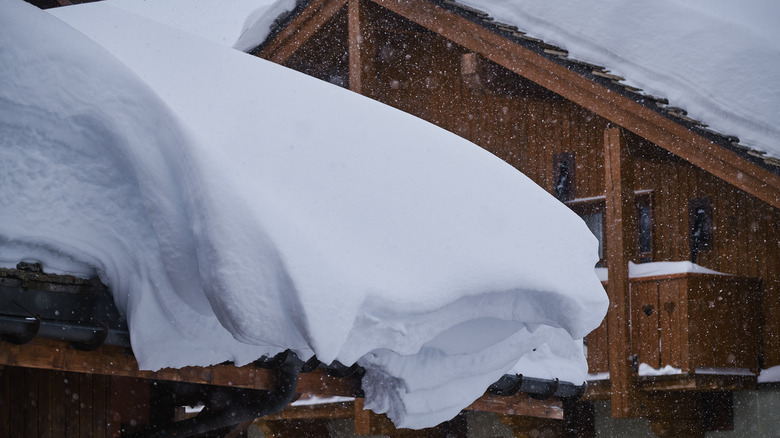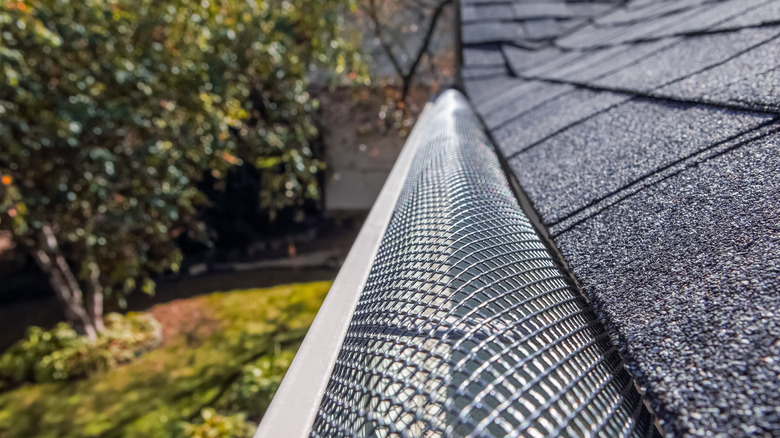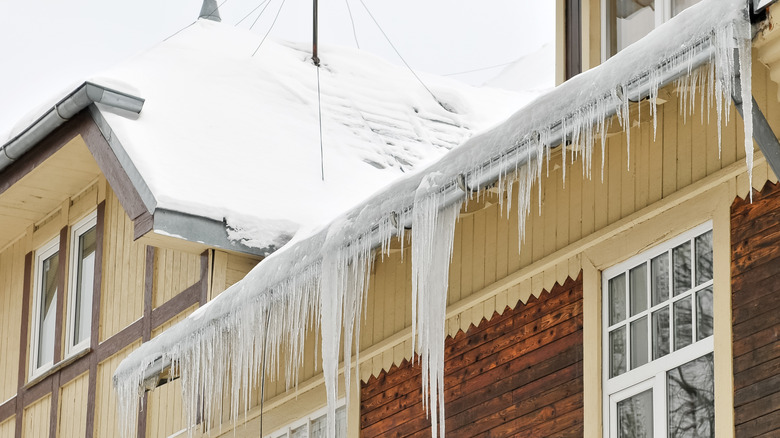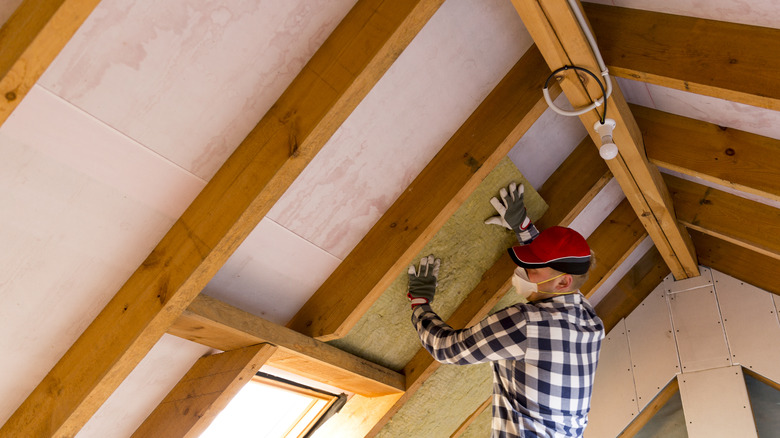Tips On How To Keep Your Gutters From Freezing This Winter
It's not uncommon to feel as though you are in a race against time in preparing your home for the winter months, but it's important to tackle a few specific tasks, especially in relation to gutters. If, in past winters, you've had frozen gutters, perhaps with a few long icicles hanging from them, that could mean you missed a few key maintenance steps leading up to this time of the year. Central Bay Roofing & Restoration explains that cleaning and inspecting gutters now, before the snow falls, is the best way to prevent concerns later.
There are several things you can do to minimize the risk of frozen gutters this winter, beyond just cleaning them, and it's always wise to be proactive. You don't want to have to climb up to fix them when the temperatures are low, and getting on a ladder is dangerous due to slick conditions. Here's how to protect your gutters this winter.
Install gutter guards
Once you do the work of cleaning out the gutters, the next step is to keep them that way. Gutter guards may provide the help you need as a type of covering to keep debris, like leaves, twigs, and animals, out. Pickard Roofing Company states these systems are not foolproof, but they do a good job overall of keeping clogs at bay, minimizing the risk that rainwater will collect in these spaces and freeze when temperatures drop. Instead, rain and melting snow can freely run down and away from the home.
Consider installing or having a professional roofer install these systems on your guttering system. Typically, they fit right over the top and remain in place. Keep in mind this step does not mean you can avoid cleaning the gutters, but it may minimize the amount of muck you are pulling out of them in the process, and that's always worth it.
Place gutter heat panels
Snow can still pile on the top of gutter guards, creating the risk of them becoming blocked, which is where gutter heat panels can help. These are designed to minimize the risk of snow and ice dams forming because they produce just enough heat to encourage it to melt and move away from the home. There are various systems available.
Warmzone notes there are various methods for heat panels to choose from, though the most common is a self-regulating heat cable that runs through a panel made of aluminum, which offers good heat transfer. These systems don't take away from the aesthetics of the home, but they do warm enough to encourage rain and snow to melt and to prevent icicles from forming. Solutions exist for not just gutters but also for roof valleys where ice dams often build up. From simple cables to more complex panel systems, these solutions aim to keep roofs protected throughout winter.
Insulate attic spaces
Icicles and ice buildup on roofs often are a sign of an ice dam, according to Insulation Institute, and they are often damaging to the structural integrity of the roof. A core reason this happens is a lack of insulation in the attic spaces or gaps in these areas that allow heat from within the home to make its way upwards to these gaps. As that happens, it can create periods of freezing and melting, allowing for ice to build up in the process.
Property owners may be able to remedy this by improving the amount of insulation in their attic spaces and then sealing the structure to prevent any warm air from escaping into the roofing structure. It may be more affordable to prevent ice dams by hiring a professional to seal off these spaces rather than having to replace the roof when ice dams will not stop forming.



